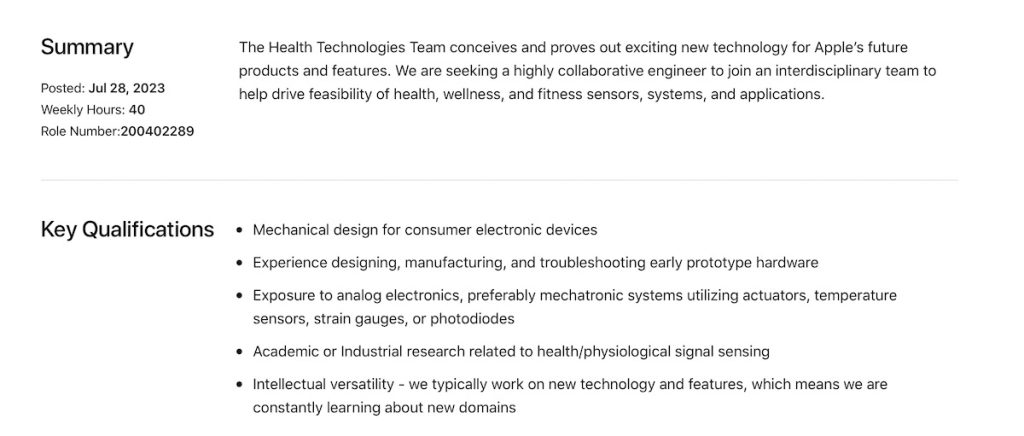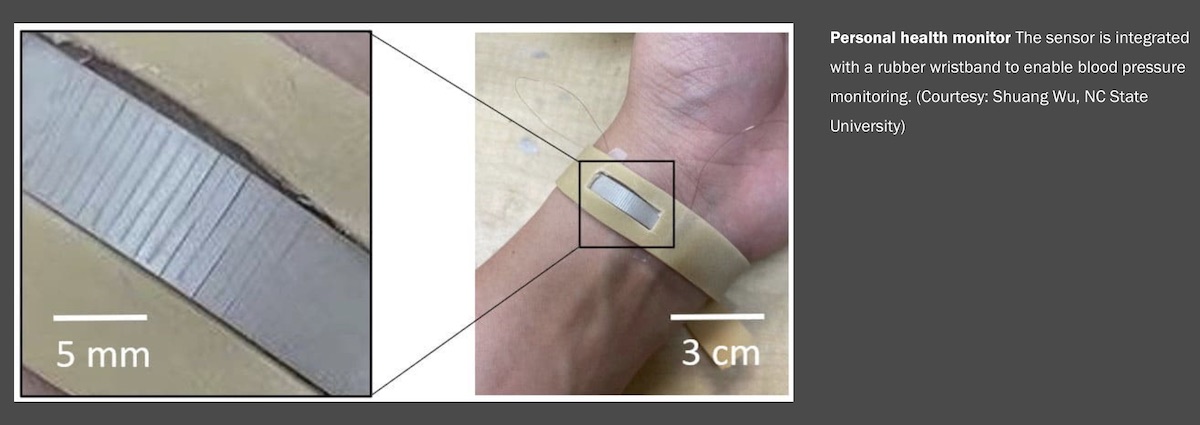One of the biggest complaints about the Apple Watch’s Workout app is its inability to capture strength training (weightlifting) workouts’ weights, reps, and sets to calculate muscular loads.
While there are third-party apps for the Apple Watch that track your reps, sets, and weight lifted, Apple’s Workout app does not yet offer these features.
Instead, the Workout app’s Traditional and Functional Strength Traning workouts track your active calories, time, and heart rate when you lift. Since the watch doesn’t know how much you’re lifting, your active calories are calculated based on age, height, weight, heart rate, and exercise duration–which for weightlifting, often isn’t a great measure.
The good news is that from a recent job posting, Apple appears to be exploring the benefits of housing a strain sensor on the Apple Watch.
The strain sensor is expected to add novel features to the wearables’ portfolio of health features.
Contents
Related reading:
- The seven best weightlifting apps for Apple Watch this year
- Strength training and weightlifting using Apple Watch, a quick primer
- A complete guide to weightlifting and strength training using the Samsung Galaxy Watch
- New Apple Watch will feature an intelligent (Embedded NFC) band identifier system
- Your iPhone, iPad and Apple Watch is a powerful healthcare companions. Interview with Dr. Tommy Korn (post WWDC insight series)
Apple’s job posting hints at strain sensor adoption
A new job announcement from Apple’s Health Technologies team posted a couple of weeks ago is looking for engineers with “exposure to analog electronics, preferably mechatronic systems utilizing actuators, temperature sensors, strain gauges, and photodiodes.”
Apple already has the temperature sensors on the Apple Watch along with the photodiodes.
What are strain gauges and sensors?
So what exactly is the objective of the strain gauge?
A strain gauge is a sensor for measuring variations in resistance when a force is applied, then converting those changes in electrical resistance into measurements.
Soft and stretchable strain sensors are invaluable for wearable electronics such as motion-tracking and physiological monitoring systems.
Wearable and stretchable strain sensors have received extensive research interest due to their applications in personalized healthcare, human motion detection, human–machine interfaces, soft robotics, and beyond.
Apple Watch and strength training monitoring for athletes 
Today’s wrist-based wearables only track your cardiovascular load during exercise using your heart rate, which is great for exercises like running, cycling, and other aerobic activities.
The challenge is that when you do a very intense or heavy-weight training session like powerlifting, your heart rate response isn’t proportional to the effort you give and the load your body sustains.
Whoop’s new strength trainer feature addresses this and provides a more comprehensive view for athletes who use strength training as their major exercise.
In particular, it calculates the weight training’s load on your musculoskeletal system and uses that information, along with your heart rate and movement, to create a strain score. 
That being said, most of the heavy lifting in the case of WHOOP is performed by the accelerometer and gyroscope.
WHOOP uses an accelerometer and gyroscope to detect the volume and intensity of each repetition of an exercise.
The Strength Trainer functionality then estimates max volume based on your workout history. It takes the max intensity for each exercise from your performance profile to calculate your muscular load for every workout.
Apple may be exploring strain gauges to understand biomechanics better and more easily to track the impact of various strength training exercises.
Researchers have explored novel approaches that can assist athletes who use strength training with their Apple Watches.
Researchers from the UK explored ways to extract Apple Watch and iPhone data and, using machine learning, provided numerous valuable metrics to assist users who use strength training.
Their paper and app, LEAN, showcases a resistance training app and exercise analysis (EA) system for both the iPhone and Apple Watch.
The app provides form analysis using machine learning, automatic repetition counting in real-time, and other important but seldom studied exercise metrics, such as range of motion on a per-repetition level and average repetition time.
Blood pressure measurement via strain sensor
Researchers at North Carolina State University have shown how a single sensor can be attached to different body parts and can accurately measure the full range of strains on human skin.
The team developed a soft stretchable resistive strain sensor with high sensitivity, large sensing range, and high robustness.
The researchers employed the sensor to monitor blood pressure, which requires extremely high sensitivity. Using a rubber band to secure the sensor, they placed it on a volunteer’s wrist to detect the pulse wave – one of the smallest strain signals on human skin.

The researchers showed that this setup could capture the pulse wave from the radial artery on the wrist.
By placing another strain sensor on the brachial artery higher up on the arm and recording a second pulse wave simultaneously, they could measure the averaged pulse wave velocity, enabling blood pressure calculation.
Final thoughts
It’s nice to see Apple exploring new sensors and potential features for future wearables.
A few Apple patents from over the years have explored the area of strain sensors in the Apple Watch.
It is more of ‘wait and see,’ as the new rumors surrounding the upcoming Apple Watch Ultra 2 do not provide any details about new sensors.








